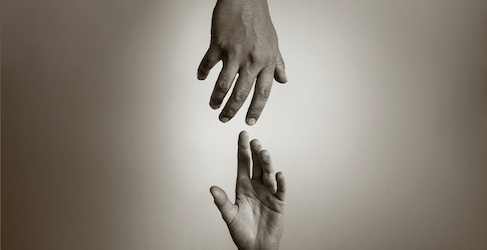
Need help? Contact the 988 Suicide and Crisis Lifeline if you are experiencing mental health-related distress or are worried about a loved one who may need crisis support. Call or text 988 or chat at 988lifeline.org. Connect with a trained crisis counselor. 988 is confidential, free, and available 24/7/365.
Suicide. Death caused by injuring oneself with the intent to die. A suicide attempt is when someone harms themselves with any intent to end their life, but they do not die as a result of their actions.
Many factors can increase the risk for suicide or protect against it. Suicide is connected to other forms of injury and violence. For example, people who have experienced violence, including child abuse, bullying, or sexual violence have a higher suicide risk. Being connected to family and community support and having easy access to healthcare can decrease suicidal thoughts and behaviors.
- Suicide is a leading cause of death and affects people of all ages.
- Suicide is a serious public health problem and has far-reaching impact.
- Resources are available to prevent suicide.
- Hope is possible.
According to the Center for Disease Control (CDC), Suicide rates increased approximately 36% between 2000–2022. Suicide was responsible for 49,476 deaths in 2022, which is about one death every 11 minutes. The number of people who think about or attempt suicide is even higher. In 2022, an estimated 13.2 million adults seriously thought about suicide, 3.8 million planned a suicide attempt, and 1.6 million attempted suicide.
Suicide affects people of all ages.
In 2022, suicide was among the top nine leading causes of death for people ages 10-64. Suicide was the second leading cause of death for people ages 10-14 and 25-34.
Some groups have higher suicide rates than others.
Suicide rates vary by race/ethnicity, age, and other factors, such as where someone lives. By race/ethnicity, the groups with the highest rates are non-Hispanic American Indian/Alaska Native people followed by non-Hispanic White people.
Veterans, Rural Youth, etc. Other Americans with higher-than-average rates of suicide are veterans, people who live in rural areas, and workers in certain industries and occupations like mining and construction.
LGBTQ+. Young people who identify as lesbian, gay, or bisexual have higher prevalence of suicidal thoughts and behavior compared to their peers who identify as heterosexual.
Read more about these suicide disparities and why they exist on the Health Disparities in Suicide webpage.
Far-reaching impact
Suicide and suicide attempts cause serious emotional, physical, and economic impacts. People who attempt suicide and survive may experience serious injuries that can have long-term effects on their health. They may also experience depression and other mental health concerns.
Suicide and suicide attempts affect the health and well-being of friends, loved ones, co-workers, and the community. When people die by suicide, their surviving family and friends may experience prolonged grief, shock, anger, guilt, symptoms of depression or anxiety, and even thoughts of suicide themselves.
The financial toll of suicide on society is also costly. In 2020, suicide and nonfatal self-harm cost the nation over $500 billion in medical costs, work loss costs, value of statistical life, and quality of life costs.
Suicidal behavior also has far-reaching impact.
There were 49,430 suicides among individuals ages 12 and older in 2022. But suicides are just the tip of the iceberg. For every suicide death, there were about:
- 11 emergency department visits for self-harm
- 52 self-reported suicide attempts in the past year
- 336 people who seriously considered suicide in the past year
Suicide Prevention Resource for Action
Suicide is preventable. Everyone has a role to play to save lives and create healthy and strong individuals, families, and communities. Suicide prevention requires a comprehensive public health approach.
Notable Personalities who regrettably took their own lives: Frances Alleman-Luce, Kurt Cobain, Ernest Hemingway, Adolf Hitler, Yukio Mishima, Sylvia Plath, Alan Turing, Vincent van Gogh, Robin Williams, Virginia Woolf
Drug overdoses may be accidental or suicidal. Famous OD’s have included: Whitney Houston, Marilyn Monroe
These tragic deaths have often led to greater awareness and discussions about mental health issues and addiction.